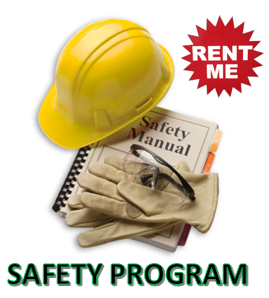
According to EHS today, too many safety programs are “new cars.” Organizations hire consultants to perform turn-key implementations and then perform all needed maintenance on the program for years to come. The organization is a car renter rather than a car owner. The expertise needed to maintain and upgrade remains totally external to the organization and an umbilical cord of dependence and ongoing expense continuously connects the organization to the consulting firm.
Organizational leaders justify such arrangements as focusing on their core competencies while outsourcing for other expertise. In some instances this is justified, but for many others it is simply an easy buying decision that can potentially sub-optimize or destroy a program before its time.
Outsourced programs seldom create a deep sense of ownership and engagement. They are like rental cars; renters never detail the car. They are just used, not owned. The organization fails to customize them to fit their culture and logistics, so they remain generic. Some programs are designed well enough that they do engage the organization with their innovations and newness. But the overarching premise is that you should make your organization fit the program rather than making the program fit your organization.
For any new program or process to become truly owned by the organization, four things must occur:
1. THE NEW INITIATIVE MUST BE STRATEGIC. This means it must fit into the overall framework of organizational strategy without conflicting with other priorities. Outsourced programs from consultants seldom fit into a strategic framework. They have their own models, methodologies and terminology. Rather than supporting an overall strategy, they can potentially distract from it. Consulting companies want these programs to remain generic so they can sell one program to as many as possible and train their consultants to deliver a cookie-cutter product.
2. SOMEONE AT THE SITE MUST BE THE SINGLE POINT OF ACCOUNTABILITY. Without a person who is accountable for the success of an initiative, maximum success is seldom accomplished. Many safety programs benefit from having a team or committee steer the process, but even then, if no single person is held accountable the success of the process is questionable. Making a program work is difficult but making it last long-term is the greater challenge. Many programs have initial success, then either explode or fade away over time. Sustainability should be built into the program rather than an afterthought.
3. THE EXPERTISE TO MANAGE THE PROGRAM MUST TRANSFER FROM THE CONSULTANT TO SITE PERSONNEL. Far too many consulting projects are based on consultant expertise rather than the needs of the client. Subject-matter experts tend to mystify their processes to create the perception that their knowledge is necessary for success. Just as car manufacturers have complicated maintenance to ensure car owners go to the dealership for repairs and maintenance rather than trying to do it themselves, many consultants try to create the perception that their ongoing involvement is not only desirable but required for continued success. Such processes create dependency and have no planned disengagement for the consultant from the project.
The use of protected intellectual property such as training materials and process aids adds to this dependency. The organization is a built-in customer of the consultant for an indefinite period. Some organizations prefer such outsourcing, but there are other options, and those other options can have potential advantages in cost savings, customization to the site culture, and built-in sustainability.
4. THE PROGRAM MUST BE MODIFIED TO FIT THE SITE. No two site cultures are identical. This is why imitating another site, even if they are successful, is not a guarantee that you will be. Likewise, adopting a generic program that has been fruitful elsewhere is not always successful. Even when such approaches generate results, they are seldom maximized to the best results possible. Customization, like the transfer of expertise, is a critical component of sustainability. Buying a car that doesn’t fit your needs leads to trading it in for a better car. Programs that don’t fit culture lead to the same end.
Unlike the option between new or used cars, the choice of safety programs is not so limiting. You can choose the best and still customize it to fit your needs. Not only is that another option, but it is the best option.
KEYS TO SUCCESS:
- Strategically choosing or creating the program that best fits your culture and needs;
- Assigning a single point of accountability to ensure ongoing success;
- Making sure to internalize the expertise needed to run the program; and
- Modifying the program to fit your site.
To read more from this article, please visit EHS TODAY: Rent A Car Safety
For more information on Workplace Safety Programs and Training Solutions, check out our Safety and Osha Training section. We customize our services to precisely fit your Company’s needs!
Related Topics: Behavior Based Safety, Coalition for Construction Safety, Construction Safety, Jobsite Safety, OSHA Training, Safety Compliance, Safety Consulting, Safety Culture, Safety Programs, Safety Training, Safety Training Programs, Training, Work Zone Safety, Workplace Safety